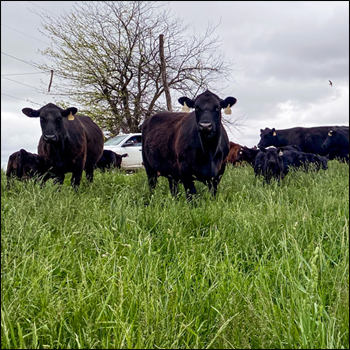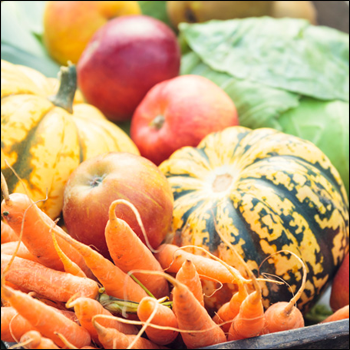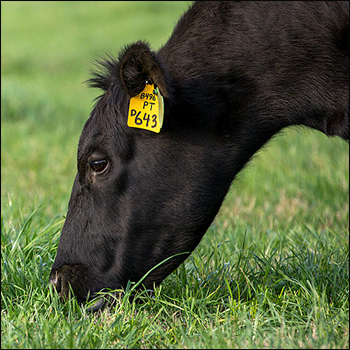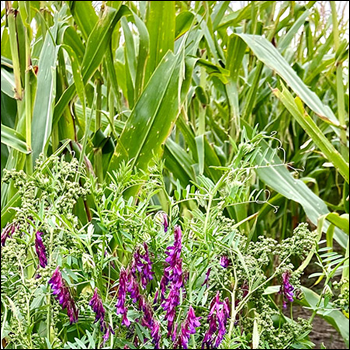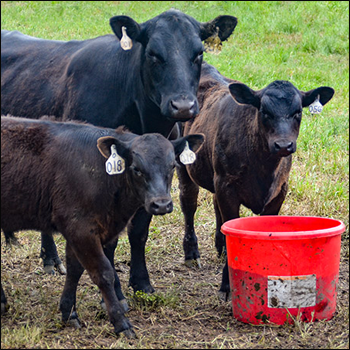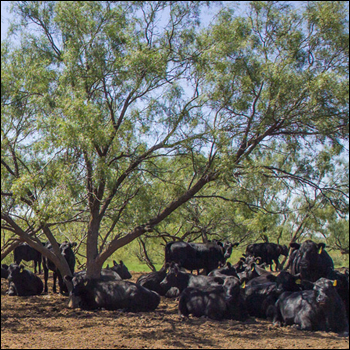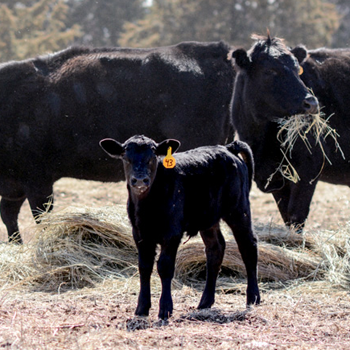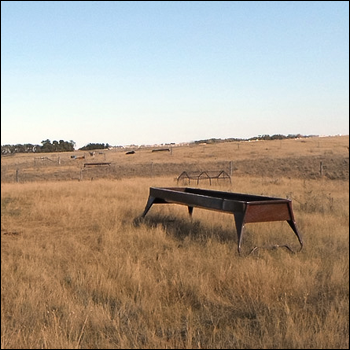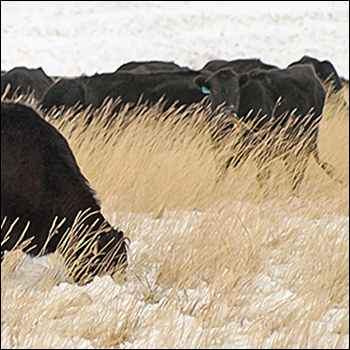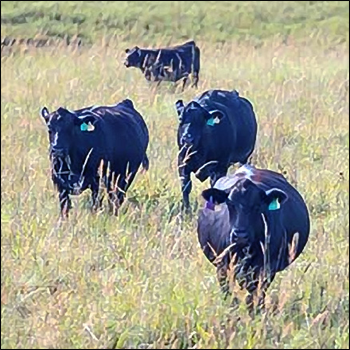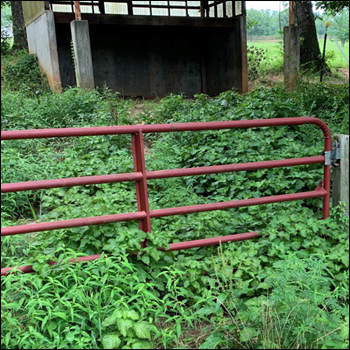Ways to Avoid Pasture Bloat
Staying ahead of bloat with anti-bloat products is the best prevention method.
by Heather Smith Thomas
Bloat is always a risk on certain pastures. If cattle can’t expel the extra gas produced by rumen microbes during digestion, bloat occurs. Nearly any pasture that is high in protein content and low in structural fiber — such as when plants are immature and lush — can be a risk under certain conditions, according to Bill Pinchak, beef cattle nutritionist and professor, Texas AgriLife Research and Extension Center at Vernon, Texas.
Some anti-bloat products are very effective if consistently consumed, but cattle must be trained to consume these before they overeat. The cattle must already be consuming it, because once they start to bloat and don’t feel well, they won’t eat it.
“If you plan to use any type of bloat intervention, whether an ionophore in a mineral or a poloxalene block, the animals need to be exposed to that and trained to eat it before they go into a risky pasture,” says Pinchak.
He advises feeding cattle a good high-fiber hay before they are turned out on pasture. Avoid turning out hungry cattle as they are apt to overeat.
With wheat pastures, bloat is more likely if the pasture was heavily fertilized.
“The amount of bloat we see on early spring growth on wheat pastures is usually related to the amount of preplanting nitrogen we fertilize with,” says Pinchak.
“I recommend using between 40 to 50 pounds maximum if they plan to graze those pastures. If they want to take the cattle off and later harvest that field for grain, they can come back after the cattle are gone and top dress with more nitrogen,” he says.
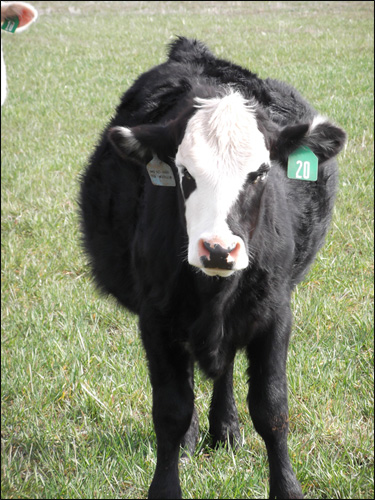
Bloat is often caused by formation of a stable foam, and fat/oil tends to break up that foam. If you can feed a supplement that is high in fat, and cattle consume it, this can decrease the risk. |
Cattle grazing winter small-grains crops like wheat typically will have a week or two in the spring when they experience some bloat, explains Pinchak. He says that bloat period can last four to five weeks and there may also be a bloat period in the fall for a week or two.
On alfalfa pastures, be careful with any lush, new growth. The more mature the plant, the less bloat potential.
“A grass-legume mixture has less risk for bloat because the cattle will be eating some grass along with the legume and there is more fiber in the grass,” says Pinchak.
It also helps to keep calcium levels high because bloat is more likely to occur when there’s a calcium imbalance. He recommends including an ionophore in the mineral program.
He says, “The nice thing about using an ionophore is that whether or not the cattle are at risk for bloat, you get a positive response in performance and improved average daily gain.”
Pinchak says he’s worked with other products, including one that has a lot of enzymes. It didn’t eliminate bloat, but it was less severe. There are several options for bloat prevention, but the important thing is getting the product into the animal. If they aren’t used to eating mineral and won’t eat a mineral pack, some people use a molasses block mineral or low-moisture tub that contains the bloat product, he says.
“Another product that works pretty well is a liquid mix that is very high in fat. Bloat is often caused by formation of a stable foam, and fat/oil tends to break up that foam. If you can feed a supplement that is high in fat, and cattle consume it, this can decrease the risk,” says Pinchak.
Some producers provide free-choice long-stem hay when cattle are on bloat-prone pastures, such as big bales in the corner of a pasture. Another tactic is to let the forage become more mature, so it is not so lush.
“There are also some low-bloat legumes like sainfoin, but it doesn’t grow very well on the Southern Plains. Cicer milkvetch is another legume that won’t bloat cattle,” says Pinchak.
Editor’s note: Heather Smith Thomas is a freelance writer and cattlewoman from Salmon, Idaho. Photo courtesy Bill Pinchak.

Angus Proud
In this Angus Proud series, Editorial Intern Jessica Wesson provides insights into how producers across the country use Angus genetics in their respective environments.
 Angus Proud: Scott Sproul
Angus Proud: Scott Sproul
Oklahoma operation learned wisdom of moving calving season to better suit their marketing needs.
 Angus Proud: Bubba Crosby
Angus Proud: Bubba Crosby
Fall-calving Georgia herd uses quality and co-ops to market calves.
 Angus Proud: Jim Moore
Angus Proud: Jim Moore
Arkansas operation retains ownership through feeding and values carcass data.
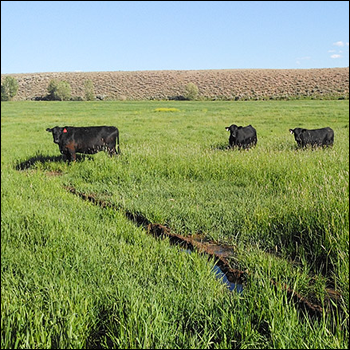 Angus Proud: Stephen Shiner
Angus Proud: Stephen Shiner
Idaho operation rotates pastures in summer and raises crops for winter.
 Angus Proud: Les Shaw
Angus Proud: Les Shaw
South Dakota operation manages winter with preparation and bull selection.
 Angus Proud: Jeremy Stevens
Angus Proud: Jeremy Stevens
Nebraska operation is self-sufficient for feedstuffs despite sandy soil.
 Angus Proud: Dave Rutan
Angus Proud: Dave Rutan
Angus breeder gets the most out of his bull investment by partnering with opposite calving-season operation.
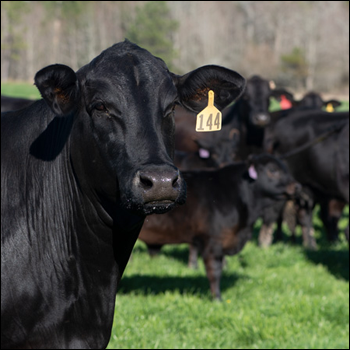 Angus Proud: Nickey Smith
Angus Proud: Nickey Smith
AngusLink helps Louisiana cattleman gain more for his calves.
